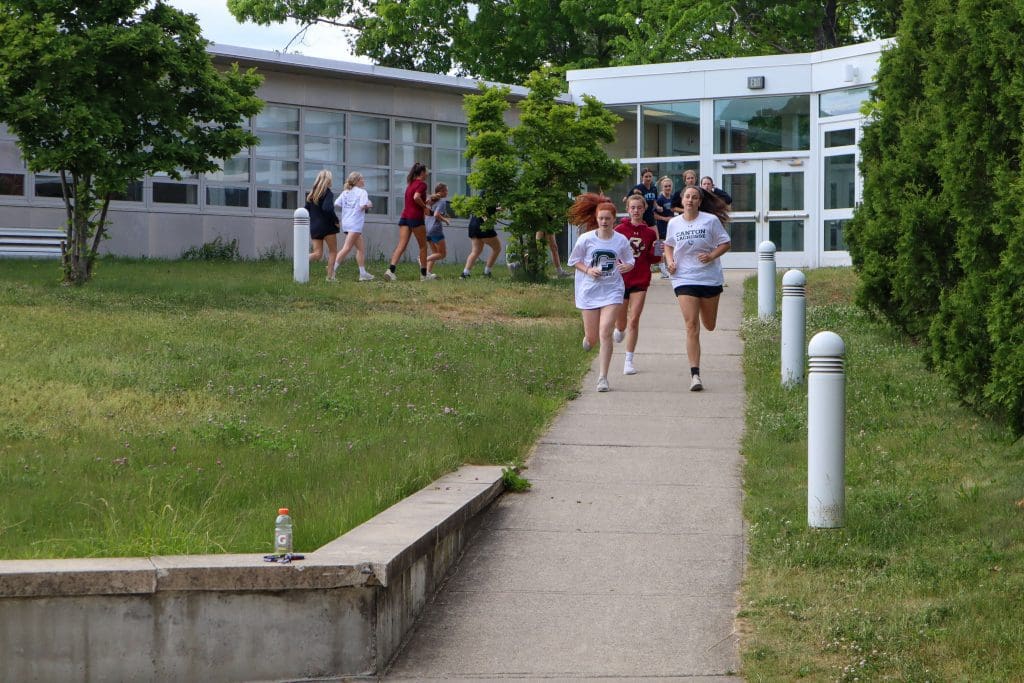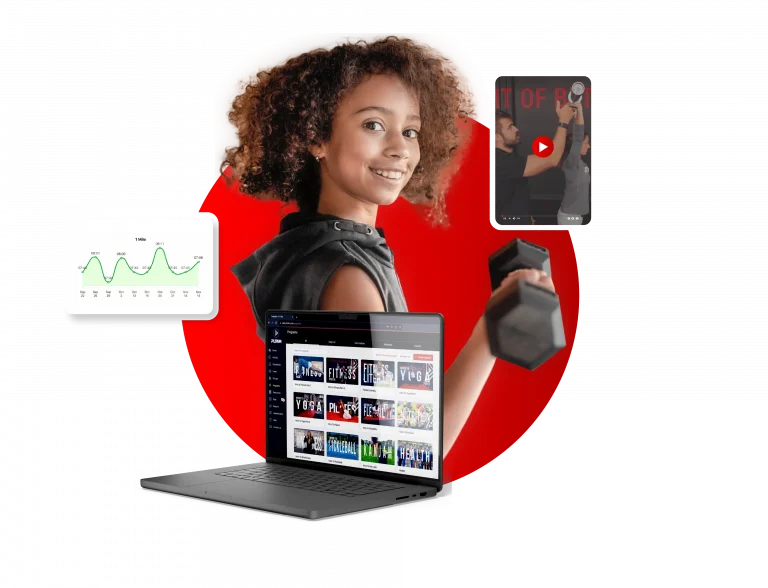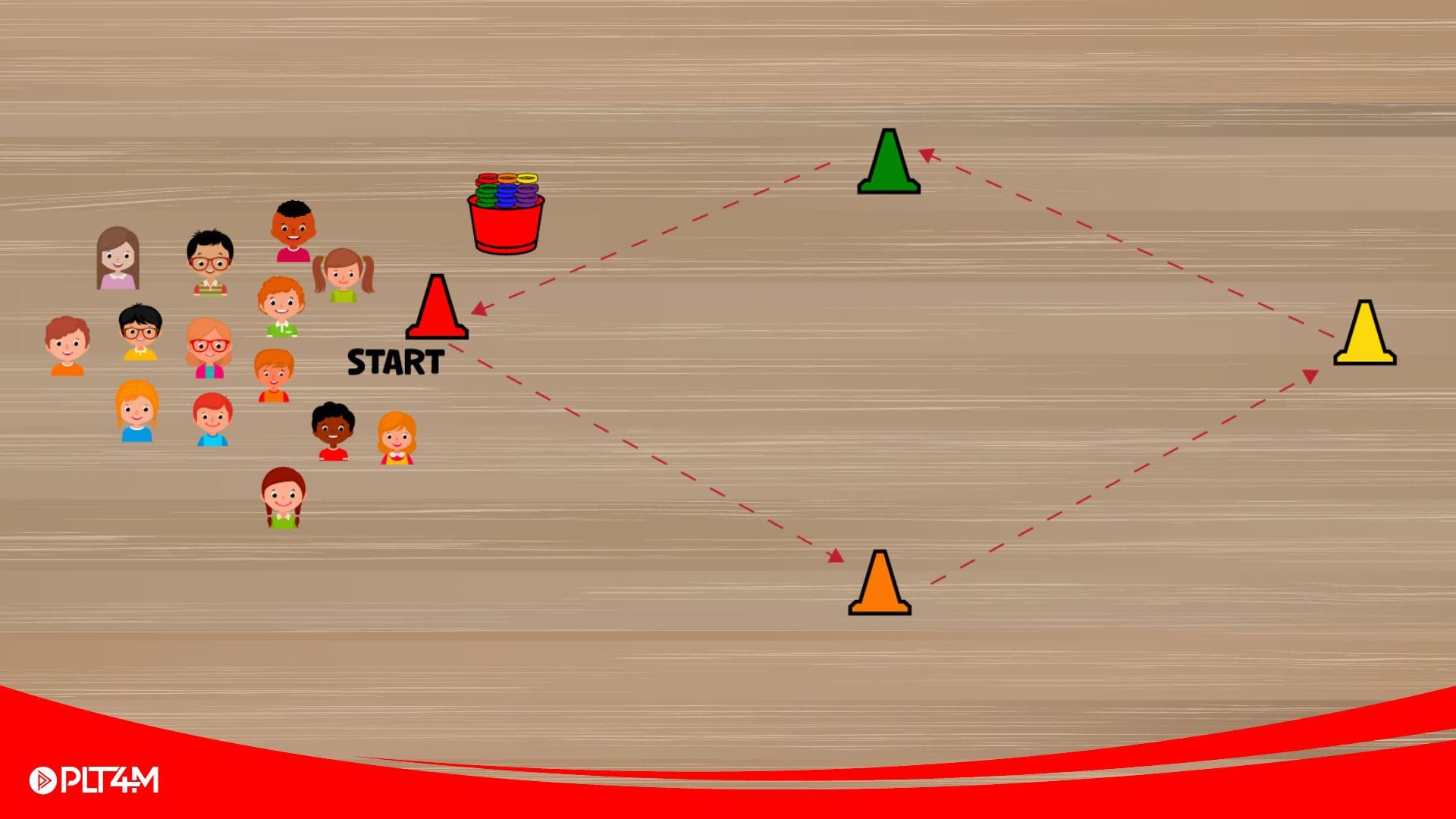PE warm up routines are an excellent opportunity to kick start physical education classes. From managing the chaos of beginning class to getting students ready for the physical activity of the day, PE warm up routines are a fun way to get PE class going.
Warm Ups For PE – Controlling The Chaos
When the bell rings to start class, it can often feel like you are far from ready to start. For example, if your students dress or change for class, this can take a few minutes to get everyone out of the locker room. And even if your students don’t need to change, it can feel like students all come shuffling into the gymnasium or fitness center at different times.
An established physical education warm up routine can give students clear expectations to start class. While you could do the exact same pe warm up every class, you don’t have to! Many teachers will have a structured outline/components of warm up activities for pe.
Not only does having a structure to your PE warm up routines help with the chaos, but it also helps to get students’ bodies and minds ready for the rest of class.
Don’t Skip Warm Up Exercises for Physical Education Class
You might be eager to get to the main physical activity of the day, but a good warm-up goes a long way! So even if your PE class is on a tight time crunch, don’t completely skip warm up.
Warm up exercises for physical education classes can serve multiple purposes. A warm-up routine can go past just ‘warming’ students up but provide skill and technique development in a wide range of movements. PE Warm ups can make for better workouts.
Past immediate benefits, it is also essential to show students the long-term importance of a good warm up. Yes, they might be able to jump right into a workout or physical activity now. But as they get older and into adulthood, just 10 minutes to warm up can help with injury prevention and better overall health and performance.
Make time for the warm up! Treat it as a key and vital part of the overall pe lesson plan and workout. Not sure where to start? Let’s explore some helpful components for any of your pe warm up routines.
Bonus Content! Check out a video podcast from PLT4M breaking down the what, why, and how of warm up.
Get Access to Hundreds of Lessons with PLT4M
Schedule a free 10 minute consultation to see how PLT4M can help save you time and empower student learning!
PE Warm Up Routines – Structure & Outline
Outlined below is one way to structure your PE warm up routines. The main components of this PE warm up are:
1) Light cardio
2) Dynamic Warm Up Exercises
3) Mobility & Static Stretching
4) Movement Prep
This is a commonly used structure for physical education classes with a fitness-focused approach. It helps to introduce students to different movements and exercises while solidifying the importance of technique and form.
This format can be used for beginner-level students learning foundational human movements up to students now taking part in an advanced strength training program for personal development or athletic performance.
Step 1: Get Moving (Elevated Heart Rate)
1A: Light Cardio
Before we do anything else, we must prime the engine. To do this, we elevate the heart rate, incite blood flow to the entire body, and begin moving our muscles and joints in a low-intensity environment. The goal here is to elevate body temperature and increase tissue elasticity. The simplest way to accomplish this is to hop into some light “cardio” work. You have a whole host of different options:
Jogging
Biking
Rowing
Jumping Rope
Jumping Jacks
Beyond the traditional cardio options, you could easily opt for something more entertaining for a group of students. For example, a casual game of knockout, tag, musical chairs (the med ball version is quite entertaining!), etc. are great fun warm up games for high school students so long as it is casual and relaxed. Again, we are all looking for continuous movement at a very moderate pace. Perform for somewhere between 2 and 5 minutes, depending on time constraints.
1B: Dynamic Warm Up Exercises
Once the heart rate is up, and blood has begun to flow, we like to transition directly into another kind of continuous movement (you could also start the process here). Unlike our monostructural cardio, though, we are working through fuller ranges of motion about different joints. Again, the goal is to expand our initial warm up into more dynamic, movement-relevant motion.
In each of these examples, the goal is slow, purposeful movement. These are not static stretches, but neither are they fast-paced. Instead, we want to reinforce great biomechanics (focusing on maintaining the lumbar curve during a bodyweight good morning, for example), and begin warming up the muscles and connective tissues through a complete range of motion that will be used during the workout ahead.
Step 2: Mobility
After the body has been warmed up a bit, we sometimes like to slow things down a little with some targeted mobility work. Passive mobility holds (aka static stretching), or tissue mashing, can help prime our body for optimal movement and positioning in our upcoming training. When done consistently, it can also improve our overall flexibility, stability, and range of motion over time.
Example: Low Dragon Stretch
The Ankle moves via Dorsiflexion (toes toward shin), Plantar flexion (toes away from shin), Inversion (to the inside) and eversion (outside). Limitations in ankle mobility, specifically dorsiflexion, can cause numerous functional and athletic limitations. For example, poor ankle flexion can restrict your ability to lunge, compromise landing and jumping mechanics, and restrict squat depth. It can also lead to Valgus Knee Collapse during the squat, a precursor to many ACL injuries. Improving the range of motion in our ankle joint will have a tremendously positive impact up through the kinetic chain, allowing us to perform daily movements with efficacy and safety.
Step 3: Movement Prep (Experience Level Dependent)
At this point in your PE warm up routines, you have already covered a lot with light cardio, dynamic stretches, and static stretches. Depending on your group of students, you may be ready to stop warm-up and jump into the main lesson plan of the day.
Movement prep will be very different based on the experience level of your students. For more advanced students, they might be getting ready to do barbell or dumbbell movements that would benefit from more specific movement prep. Beginner level students movement prep might look like more bodyweight exercises and basic movements before the main workout of the day. Here is where you can be flexible and adapt to the demands of the day with consideration student experience levels.
At PLT4M, we’re total sticklers for proper deadlift form. We love the lift as a tool for developing raw strength as well as a rigorous reinforcement of core stability, posterior chain mobility, and spinal alignment and posture.
Too often, though, we see young athletes pulling heavy loads off of the ground with sub-par technique or worse. Not only are they sacrificing maximum potential force production with inefficient movement, they are putting themselves at the very real risk of legitimate injury.
In order to combat this risk, we like to spend time drilling our “pulling” technique anytime we get the chance.
Here we have a complete drill for athletes to correct or improve their positions while warming up for heavier loading. With a PVC pipe or empty barbell, perform 5 slow reps of each of the following:
Deadlift – PE Warm Ups
1.Top-Half Deads (Like an RDL, from hip crease to the knee). Focus on pushing the hips back, keeping the bar on the quads, knees remain where they are, lumbar curve maintained.
2. Bottom-Half Deads (mid-shin or ground to the knee). Focus on pushing the floor away, instead of pulling the bar off the ground. Hips and shoulders should rise together, maintaining a good flat back.
3. Pausing Deads. Combine the two movements, with a deliberate pause at the knee.
4. Full Deadlifts. Blend both pieces into one fluid movement. Focus on returning the bar the exact same way you pick it up.
Key Takeaways on PE Warm Ups
No matter how you approach warm up, emphasize its importance in the greater fitness equation. Students will prioritize it, if you do. Yes, pe warm up routines are a great classroom management tool, but they are also so much more than that.
Even if 10 minutes is to much time to dedicate to warm up, find something that allow students to mentally and physically start class on the right foot.
Need more warm up variations and ideas? Below are some other videos from the PLT4M resource library that are used throughout our programs.









